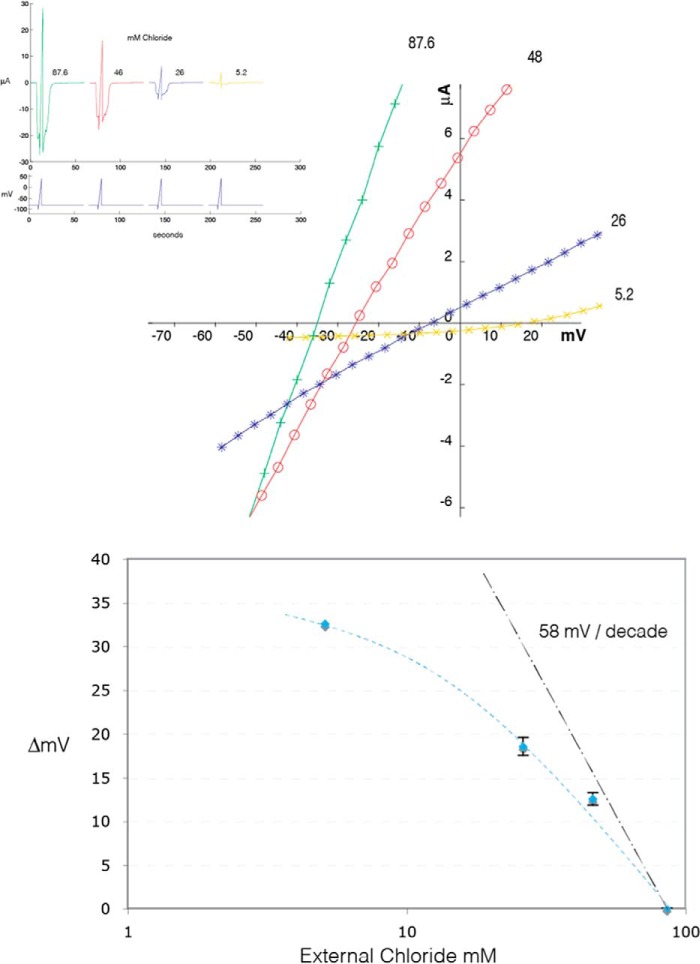FIGURE 7.
tAlv-a1-pHCl is permeable to chloride ions. The reversal potential for the pH-evoked current was determined by applying a voltage ramp protocol, illustrated by the blue traces in the top panel, first under control conditions (87.6 mm) and then in a series of decreasing extracellular concentrations of chloride. In these experiments, sodium chloride was replaced by mannitol. Reducing the extracellular chloride concentration caused both a reduction in the amplitude of the response, as seen on the current traces, and a shift of the reversal potential observed in the center panel. The plot of the shift of the reversal potential as a function of the logarithm of the extracellular chloride concentration reveals that the Alv-a1-pHCl receptors are permeable to chloride ions and display an ionic selectivity close to the 58 mV/decade predicted for a channel exclusively permeable to chloride ions. Error bars indicate mean ± S.E.

